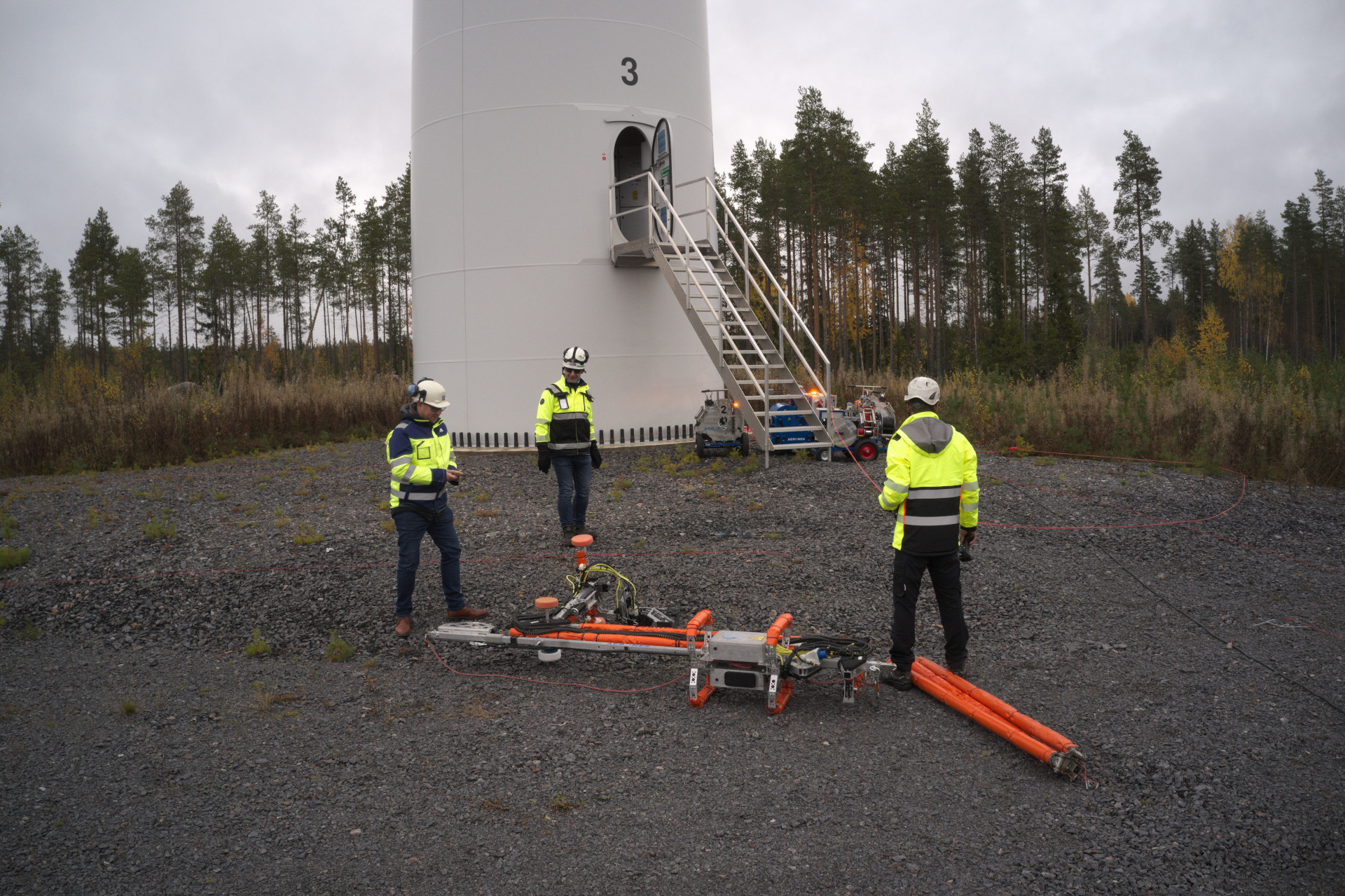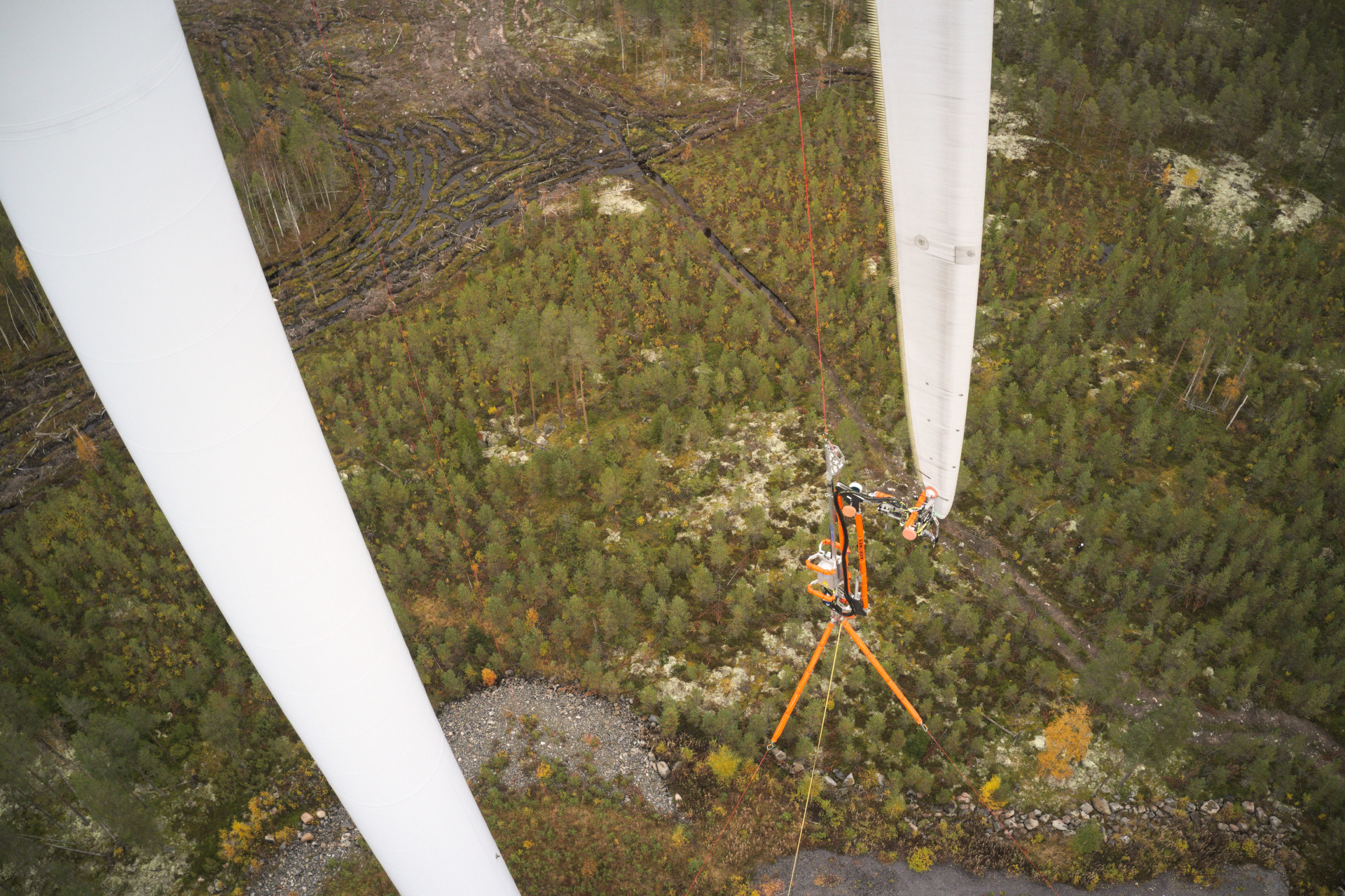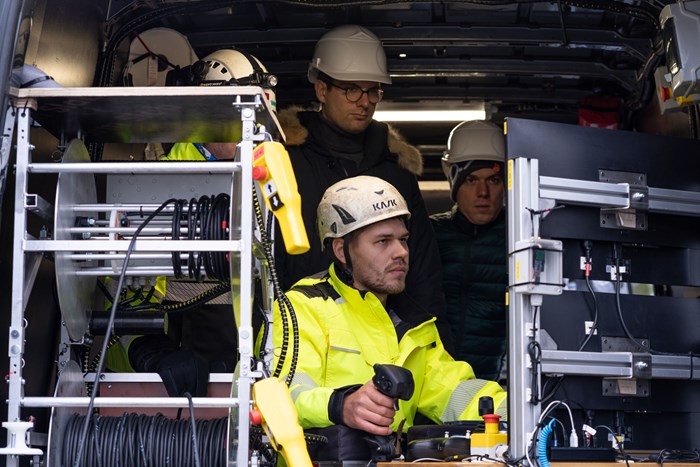Remote-controlled robots inspect wind turbines without putting humans in danger
As the world continues to move away from traditional fossil energy sources, wind energy has become increasingly popular as a sustainable alternative. Nonetheless, maintaining and inspecting wind turbines can be difficult and time-consuming. Fortunately, robotics technology has made it possible to inspect quickly and safely, while also providing more detailed data than before.
Wind turbine inspection is important to ensure their smooth and efficient operation. You have to prevent blade erosion; the surface ages bit by bit, and as a result, over a turbine’s lifetime, less and less energy is generated. Lightning protection measurements are crucial too, because wind turbines are, due to their height, likely to get struck by lightning. Inspections also prevent fires, explosions and other dangerous incidents.
Robotic inspections
Robotic inspections have become a meaningful element of the maintenance and repair of wind turbines. That’s why Kiwa has set up a collaboration with Aerones, the world’s leading robot-enabled wind turbine maintenance and inspection service provider.
Together they provide:
- Blade cleaning
- Visual inspection
- Internal blade inspection
- Lightning Protection System testing
- Drainage hole cleaning
- Cleaning of towers
- Visual inspection of towers

This is how robots work
To get the robot to work, first a rope system is set up with four winches positioned. A robotic arm platform is located in the middle of it. The first rope moves vertically, and the rest moves in a planar direction. All robotic arms have their own distinct tasks, whether they are used for inspection, cleaning, or repair. The robotic tools are controlled and monitored by technicians based in a mobile vehicle.
Aerones robots go around wind turbines to capture detailed images of the tower, blades, and other critical parts. This data is then analysed to identify damage or potential issues that need to be addressed.
The robots clean blades by spraying liquid detergent on them. They also examine them using ultrasound scanning and cameras, and they repair them by cleaning damaged areas and filling gaps or eroded surfaces. In colder climates, robots also use a specific coating to stop ice from developing on turbines, and a protective coating to avoid further damage.
The benefits of robotic inspections
“In the past, inspections were typically carried out by technicians who had to go up by elevator and manually inspect each component on a blade maintenance platform,” says Robbert Boer, account manager Wind Energy at Kiwa. “Rope access is more dangerous because we send up humans. Robots eliminate all risk.”
With robotic inspections, we are able to complete an inspection quickly without putting anyone in danger.Robbert Boer, account manager Wind Energy at Kiwa
Robots have several advantages over traditional methods:
- Reduced risk
With robotic inspection, technicians don’t have to go up. You can complete inspections without putting anyone in danger. - Increased efficiency
By using robots, you'll also save time spent setting up blade maintenance platforms. And robots work much faster than humans. - Versatility
Robots are versatile: they mostly handle the hard parts of the job, like lifting and moving bulky and heavy items around. Drones have limited payloads. - Weatherproof
Robotic inspections can be performed in a wide range of weather conditions, making them more available and efficient. Wind, rain, and snow often limit traditional inspections.
In addition, robotic inspections can also be more cost-effective than traditional inspections. “On the one hand, the reduction in labour costs and increased efficiency can lead to significant savings in the long run,” says Boer.

Robotic inspections are faster
“On the other hand, each hour a turbine is not in operation, it costs more and more money as power prices rise. For a robot inspection, you only have to stop a turbine for a short period of time. For example, a full Lightning Protection System inspection takes about two to three hours, including the setup and dismantling of the robotic system. That is significantly faster than the traditional rope access technique performed by technicians.”
Robotic inspections avoid unnecessary downtime. Robots decrease downtime by almost four to six times.Robbert Boer, account manager Wind Energy at Kiwa
Robots decrease downtime by four to six times
Furthermore, robotic inspections provide more detailed and accurate data. The high-resolution cameras and sensors can capture images and data that are not visible to the human eye, allowing for a more comprehensive analysis of the condition of wind turbines. This means that any defect can be identified and addressed more quickly, reducing downtime and maintenance costs. Robotic tools are precise and efficient, minimizing downtime by four to six times and reducing idle time by five to ten times as compared to traditional inspection.
A game-changer
On the whole, robotic inspections of wind turbines are a game-changer for the wind energy industry. Compared to humans, robots are faster, more efficient, cheaper, and more accurate; they can help increase the safety, reliability, and performance of wind turbines.



